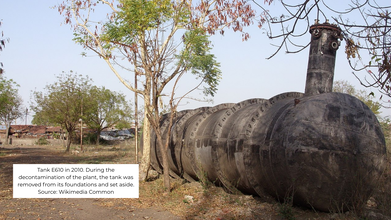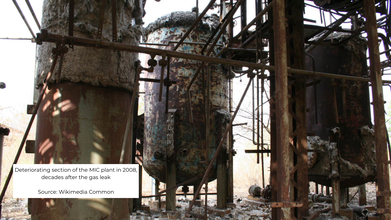- Health Conditions A-Z
- Health & Wellness
- Nutrition
- Fitness
- Health News
- Ayurveda
- Videos
- Medicine A-Z
- Parenting
Lower Doses Of CBD Could Also Cause Liver Damage: FDA Study Finds

(Credit-Canva)
CBD or cannabidiol is a very popular component, not just in cannabis (marijuana) but it is also an important component in medical marijuana, Harvard Health explains. They further detail how CBD does not make people dependent on it or cause potential substance abuse. However while previous studies like 2024 study published in the Neuropsychopharmacology journal have shown that CBD is unlikely to cause significant harm to daily functioning or workplace performance, researchers have found that liver damage can be a likely outcome of long-term use.
Even though cannabidiol (CBD) products are everywhere these days—think capsules, gummies, edibles, oils, and lotions—a recent study suggests that even small amounts might not be entirely safe for your liver.
FDA Trial Investigates Low-Dose CBD Effects
Researchers from the Food and Drug Administration’s (FDA) Division of Applied Regulatory Science conducted a randomized, double-blind, placebo-controlled trial last year. The study aimed to assess how low-dose CBD affects liver function in a group of 201 healthy middle-aged men and women.
For four weeks, 201 volunteers were given either a typical amount of oral CBD (about 350 mg for someone weighing 154 pounds) or a dummy pill. They had weekly check-ups to see how their bodies were reacting.
Liver Enzyme Elevations Observed
The study, published in JAMA Internal Medicine, found that most people were fine. However, 5% showed significantly higher levels of a liver enzyme called aminotransferase. This enzyme is a known sign of liver damage or inflammation. Women seemed to be more affected than men. The good news is that these liver enzyme levels went back to normal within a week or two after people stopped taking CBD. Also, seven participants dropped out of the study because they were showing signs of possible liver injury caused by the CBD.
Researchers called these findings "important." They said it suggests that CBD itself, even without other drugs, might be a risk to liver health. Many people using over-the-counter CBD might not know about this potential for liver damage, assuming CBD is completely harmless.
What Liver Problems Look Like
Signs of liver damage include stomach discomfort, yellowing of the skin and eyes (jaundice), and feeling very tired. It's important to know that liver injuries caused by drugs don't always show up right away. In the government study, only one person with high liver enzymes actually felt symptoms within four weeks. This suggests that people might not realize they're hurting their liver. Experts say doctors should ask about regular CBD use during check-ups.
This isn't the first study to point out possible liver risks with CBD. Concerns came up before when a government agency reviewed data for CBD-based prescription drugs for childhood epilepsy. In those cases, 14% of patients had raised liver enzymes. While those patients were also taking other seizure medications, the new study suggests CBD alone can be a factor.
Research also shows that certain doses of CBD can affect liver cells in a way similar to acetaminophen (Tylenol). Acetaminophen, when taken too much, is a very common cause of drug-induced liver injury.
Who Might Be at Higher Risk?
Recent studies show that people who take very high doses of CBD, over 1000 mg per day, are most at risk of liver injury. However, there have been reports of liver injuries even in healthy people taking moderate doses, between 300 mg and 1000 mg per day.
We don't know much about why some people are more affected than others, but it's thought that genetics might play a role. CBD can also block certain liver enzymes needed to process medications.
In the new government study, most participants who had serious liver problems also showed signs of an immune condition where the body makes too many white blood cells called eosinophils.
Ozempic Users In 2025 Reported These 5 Unusual Side Effects

Credits: Canva
From celebrities trying to slim down for a red-carpet event to people using medication to manage diabetes or obesity, GLP-1 drugs have become a widely used choice for weight control. They are often described as near-perfect solutions, yet they can bring unexpected effects. In 2025, many users began noticing reactions that had not been mentioned before, especially among those taking Ozempic. If you rely on Ozempic for weight management or overall health, it helps to know the unusual side effects people spoke about during the year.
What are GLP-1 Drugs?
GLP-1 drugs, also known as GLP-1 agonists, were first developed for diabetes care. They work much like the body’s own GLP-1 hormone, which is released after meals to prompt insulin production. Those living with diabetes often do not make enough insulin to keep blood sugar steady. A GLP-1 medication boosts insulin release so blood sugar stays more stable. These drugs often support weight reduction as well.
For many people with diabetes, weight control plays an important role in managing the condition. GLP-1 drugs reduce hunger and help the stomach empty more slowly, creating a longer sense of fullness. This can lead to marked weight loss in people with or without diabetes.
Ozempic: What Is It And How Does It Work?
Ozempic is a prescribed treatment mainly used for adults with type 2 diabetes. The active substance is semaglutide, given once a week through an injection. It is a glucagon-like peptide-1 (GLP-1) receptor agonist that acts like a natural hormone in the body. It increases insulin when blood sugar rises, lowers glucagon levels, and slows the movement of food through the stomach, which in turn reduces appetite.
5 Unusual Side Effects Of Ozempic People Reported In 2025
Beyond the familiar effects such as nausea, constipation, and stomach discomfort, some users shared experiences that felt different from the typical list. Below are the unusual reactions connected with Ozempic that gained attention in 2025.
Ozempic Vulva
“Ozempic vulva” is a phrase women have used to describe changes in the vulva, including loss of volume, sagging, or dryness, especially after major weight loss linked to Ozempic or similar medicines. These changes are not a medical diagnosis. They seem to come from rapid fat loss, reduced muscle mass, shifts in hormones, or dehydration, rather than the drug itself, according to Healthline. Reported changes include a less plump appearance in the labia majora, dryness, and a looser texture.
Ozempic Poop
Medical News Today notes that Ozempic often triggers what is known as a “stool reflex”, in which the gut tries to clear space once food reaches the intestine. In some people, this reflex becomes unusually strong, leading to diarrhea. Many users have discussed this on Reddit. One person created a widely shared thread asking, with complete honesty, for tips on avoiding accidents while sleeping. They explained they had struggled with this for months and called it their most frustrating symptom. Another user, after three doses, said that “sh*tt*ng the bed” was the one thing they were dreading.
The good news is that most people do not face such long-lasting trouble. Studies from 2022 show that diarrhea linked with Ozempic usually lasts around three days when starting the drug. For most users, it settles within about four weeks as the body adapts.
Ozempic Breasts
“Ozempic breasts” is an informal expression used for changes in breast size or shape that appear after rapid weight loss while on Ozempic. Breasts contain a large amount of fatty tissue, so when someone loses weight quickly, they may notice less fullness, sagging, or a flatter look. Although this is not a recognised medical term, it has become a common concern among those using the medication, according to Healthline.
Ozempic Butt
“Ozempic butt” refers to loose or sagging skin that may show up after dramatic and fast weight loss while using these drugs. This can cause a softer or deflated look in areas where people naturally hold more weight. It is important to remember that this effect comes from rapid weight loss and not from the medication acting directly on the body.
Ozempic Feet
“Ozempic feet” is a name people have given to changes in the feet linked with sudden weight loss from drugs like Ozempic. These include loose skin, reduced fat padding, more visible veins, and extra pain while walking. These shifts can make the feet more sensitive and increase the chance of developing corns and calluses, since there is less cushioning. Other possible concerns include tingling, numbness, or swelling, as noted by Healthline.
If you notice any of these changes, remember that they often appear during periods of fast weight loss. Still, it is best to speak with your healthcare professional if anything becomes difficult to manage or feels out of the ordinary.
Health Impact That Still Lingers On The Victims Of Bhopal Gas Tragedy That Released 40 Ton Of Toxic Gas In Air

Credits: Wikimedia Commons
In June 2025, 337 ton of toxic waste from the Union Carbide factory in Bhopal finally left from the city in 12 trucks and arrived at the Pithampura industrial area. The waste was carried in spill-free trucks, but the impact of this toxic waste and the toxic gas on people, still spills today.
As we observe the National Pollution Control Day today, which commemorates the victims of the 1984 Bhopal Gas Tragedy, we also look back onto how its spill on human lives.
Also Read: Trump MRI Results Released: Heart and Abdomen Scan ‘Perfectly Normal’, White House Says
What Happened On December 2 and 3, 1984?

Between December 2 and 3, around midnight, in 1984, there was a massive leak of a poisonous chemical methyl isocyanate (MIC) from a Union Carbide pesticide plant that took thousand lives, and maimed a thousand more, leaving many, even four decades later, impacted.
As per the 1992 study by R Dhara, the gas leak caused chronic inflammatory damage to the eyes and lungs, which was also the main cause of morbidity. Reproductive health problems in form of increased spontaneous abortions and psychological problems were also reported.
The leak was called world's worst industrial disaster. Around 40 ton of toxic methyl isocyanate gas was released into air, and killed more than 3,000 people.
Also Read: Scromiting: What Is This Severe Vomiting Syndrome Linked To Long-Term Cannabis Use
Those Who Are Still Affected

The toxic waste which had been lying till June this year, as per surveys, contain 6 of the persistent organic pollutants that are banned by the United Nations for their highly poisonous impacts on the environment and human health.
As per the data by the Sambhavna Trust, even after 3 decades, the mortality rate for gas-exposed victims is still 28% higher than the average. The survivors are twice as likely to die of cancers, lung diseases, and tuberculosis. They are also three times as likely to die from kidney diseases and 63% more likely to have illnesses. The data also showed that a 25% of the survivors who had been exposed to the gas were under-active thyroid and can have long-term health impacts.
The explosion also had adverse effects on women, babies, and caused a high rate of infertility, stillbirths, abortions, early menopause and irregularities in menstrual cycles. The Guardian reported that many women left their husbands as they believed "not to be capable of fulfilling the familial duties expected of them".
The Chingari Children's Centre which was established for those born with disabilities due to the gas tragedy registered over 1,000 children. Many of these kids were affected by cerebral palsy, muscular dystrophy, autism, intellectual disabilities, and severe learning difficulties.
A study by the Indian Council for Medical Research (ICMR), found that still 9% of babies who were born between 2016-17 had birth defects. These babies were born to mothers who had been exposed to gas. The Guardian reports that the "study was subsequently discredited by the ICMR, who ordered it not to be published or disclosed."
The Leak That Leaks Even Today

Last year, in September, survivors of the tragedy also visited Harvard TH Chan School of Public Health and shared their stories. The survivors included two women who were children when the gas leak happened, Farhat Jahan and Bati Bai Rajak. They shared that the disaster still continues to leave its impact on the new generation.
A 2023 study published in journal BMJ One also revealed that even after four decades of the tragedy, future generations are afflicted by disabilities and cancer. The study also noted a decline in male births a year after the tragedy, impacting around 100km radius around Bhopal.
Other health conditions include respiratory, neurological, musculoskeletal, ophthalmic, and endocrine issues. The impact also resulted in a 4-fold increase in miscarriages and a higher risk of stillbirth. Researchers from the University of California San Diego also noted that reproductive health impacts could trickle town to future generations, which could be seen even today.
Gordon McCord from the School of Global Policy and Strategy at UC San Diego and the author of the study said that male fetuses are more suspectable to adverse shocks including smog, disease, natural disasters and stressful events during pregnancy. This was reported in media outlet Down To Earth.
Studies also found that men born in 1985 within the 100 km of Bhopal had eight-fold increased risk of cancer.

Another study which analyzed the survivors from 1985 to 1994, titled Health Effects of the Toxic Gas Leak from the Union Carbide Methyl Isocyanate Plant in Bhopal noted for genetic risk of pregnancy outcome in women who were exposed to the toxic gas. The abortion rate was 523 per 1000, immediately after the tragedy. The study also found that infants were born with congenital malformations.
Bhopal gas leak tragedy paved way for a safer workspace and lead to the many laws which aims to protect the survivors, their rights, and also holds the companies accountable for the damage. However, despite this, many survivors still continue to live with chronic pain, diseases, and scarred memories from the tragedy.
This day observed as the National Pollution Control Day is a reminder to why environmental safety is key to health safety, and must alarm the nation for the air pollution situation that continues to worsen by every passing day.
What Is 'Ozempic Poop'? The Brutal Side Effects Failing People's Gut

Credits: iStock and Canva
Lots of new developments around weight-loss drugs, with the World Health Organization now stepping in to lower the dosage, and many companies like Eli Lilly actually slashing down the price for better access. Amid this what people may be forgetting are the unusual side effects of being on popular weight loss drugs.
The internet has made room for a lot of unusual confessions, but few are as chaotic, or as oddly supportive, as the Reddit threads where people taking weight-loss jabs like Ozempic and Wegovy openly discuss their most embarrassing side effects. And one theme keeps popping up: unpredictable bowel movements, including the dreaded “sleep sh*ts.”
One Reddit user started a viral thread with a painfully honest plea: “Any advice for not sh*tt*ng in the bed while sleep?” The user said they’d been dealing with this for months and called it “the most annoying side effect.” Another person, already three shots in, nervously listed “sh*tt*ng the bed” as something they were “not looking forward to.”
This mix of diarrhea, constipation, and everything in between has sparked concern, and, for many, shame. But as more people turn to GLP-1 medications for weight loss, understanding why this happens has never been more important.
Pooping Uncontrollably: It Happens More Often Than You Think
The phenomenon isn’t limited to anonymous Reddit users. A Florida nurse, interviewed by Business Insider, described weeks of constipation so bad she tried “everything from stool softeners to a megadose of Milk of Magnesia.” But by attempting to “hit it from the top and bottom,” she ended up losing control altogether, hence her reluctant membership in the self-appointed “sh*t the bed club.”
Another semaglutide user confessed online: “I quite literally sh*t myself while sleeping… tough few days of diarrhea after my first injection.” And yet, others reported the opposite: stubborn constipation, going days without relief, or passing what one Redditor bluntly called “rocks.”
These extremes highlight one thing clearly, digestive unpredictability is surprisingly common.
Why Do GLP-1 Drugs Mess With Your Gut?
Semaglutide (the active ingredient in Ozempic and Wegovy) is part of a class of medications called GLP-1 receptor agonists. These drugs work by slowing gastric emptying and nutrient absorption so users feel full for longer. But the same mechanism that makes the drugs effective can also confuse the digestive system.
Medical News Today notes that Ozempic often triggers a “stool reflex”, when food entering the gut prompts the colon to clear space. For some people, this reflex becomes unusually strong or overactive, leading to diarrhea.
On the flip side, slowing the gut too much can cause constipation. That’s why Wegovy’s own prescription info reports both diarrhea (30% of users) and constipation (24% of users) during clinical trials.
New York gastroenterologist Dr. Eric Goldstein told Insider that while digestive issues are a known side effect of GLP-1 drugs, the severity seen in social media posts is likely exaggerated because people tend to share the worst-case scenarios. Still, he emphasised that “any medication… may have changes or side effects that need to be monitored.”
How Long Does It Last — And Should You Be Worried?
Fortunately, most people don’t deal with weeks of chaos. According to 2022 research, Ozempic-related diarrhea typically lasts around three days after starting treatment. For the majority, symptoms settle within the first four weeks as the body adjusts. Only 4.3% of people stopped treatment because of GI side effects.
However, flare-ups are common after dose increases, and doctors may recommend slowing dose escalation or adjusting timing if symptoms become disruptive.
Still, experts consistently advise the same thing Reddit does, though with less sarcasm: monitor your symptoms, stay hydrated, avoid greasy or heavy foods, and reach out to your doctor if things become severe or last longer than a few weeks.
© 2024 Bennett, Coleman & Company Limited

